Nagasaki Atomic Bomb Museum and Peace Park is a somber reminder of the cruelty of war and the tragedies it leaves behind.

On August 9, 1945, Nagasaki experienced one of the most devastating events in human history when an atomic bomb exploded above its sky. 150,000 people were killed or wounded. The Nagasaki Atomic Bomb Museum, Nagasaki Peace Park, and Nagasaki National Peace Memorial Hall were built to commemorate this tragic event.
It was a difficult and emotional visit for our family to the Atomic Bomb Museum and the surrounding parks. Nevertheless, it’s important to educate our children so they learn the paramount need for world peace. Our family had previously visited Hiroshima Peace Memorial Park.
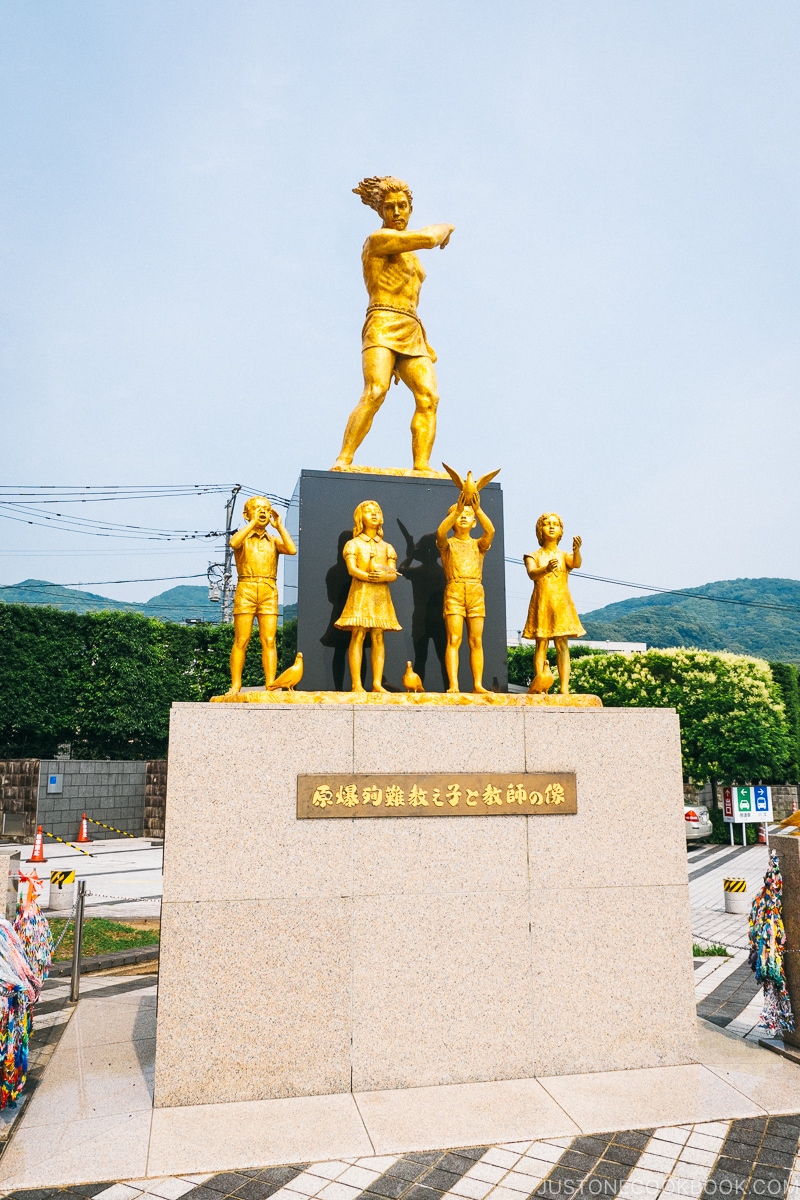
Where is Nagasaki Atomic Bomb Museum
Nagasaki Atomic Bomb Museum and Peace Park are located slightly north of downtown Nagasaki. It takes 12 min on the train or 7 min by car from Nagasaki Station.
The museum is located very close to where the atomic bomb exploded (marked by a cenotaph).
Nagasaki Atomic Bomb Museum
The Nagasaki Atomic Bomb Museum is a fairly recent construction and it was built in 1996. Before the museum, the artifacts were exhibited in Nagasaki International Culture Hall. The exhibits in the museum are separated into 3 sections:
- Reproduction of Damages Caused by the Bombing
- Artifacts and history related to the bombing
- Nuclear Weapons Free World
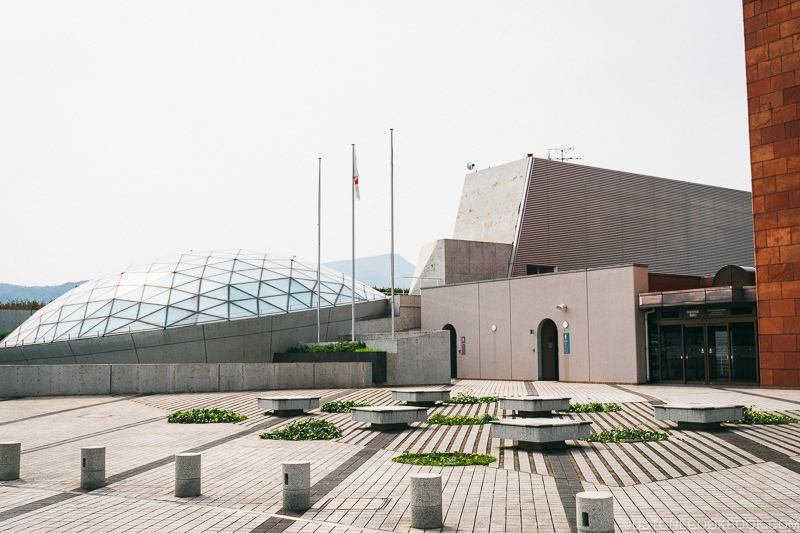
You can virtually visit the museum on Google Maps and see the devastating images at Google Arts and Culture. The details of the exhibits are available on Nagasaki City website.

Reproduction of Damages Caused by the Bombing
One of the first items visitors see when they enter the museum is a broken wall clock that stopped at 11:02 am. That was the moment the bomb exploded above the sky of Nagasaki. The photographs along the wall showed life in Nagasaki before the bomb was dropped.
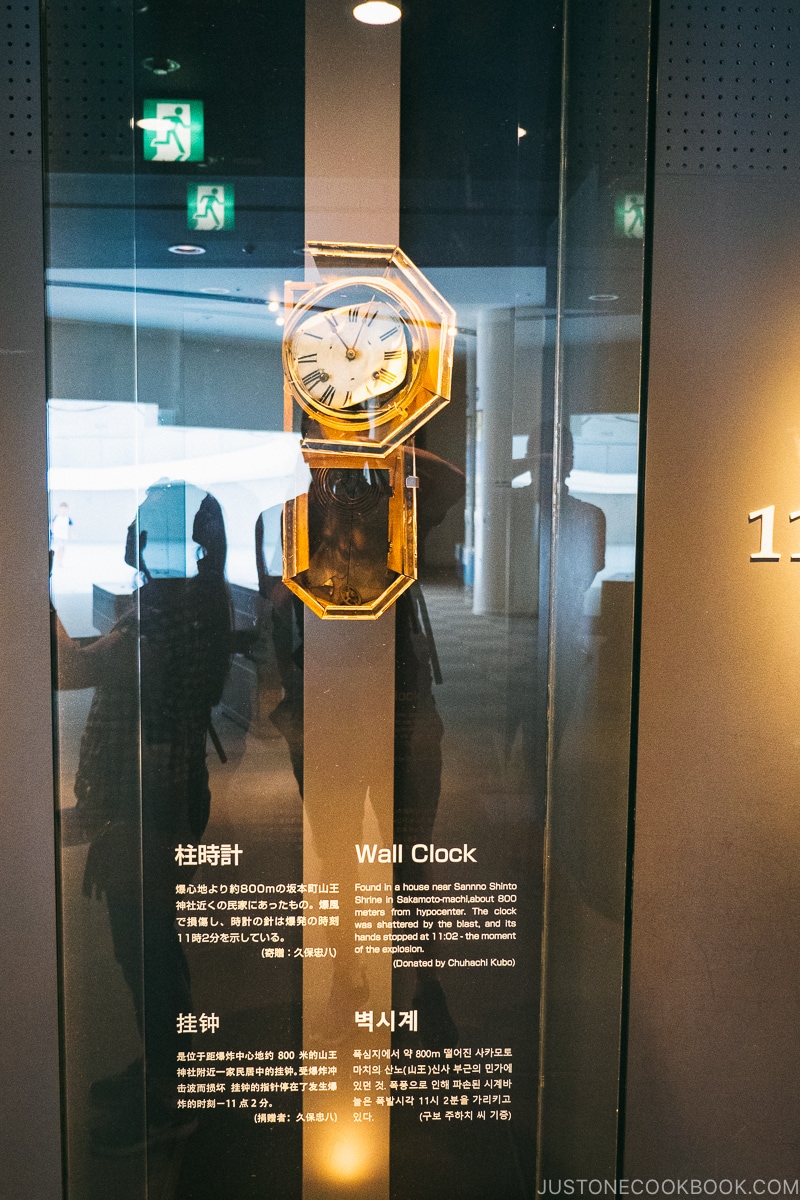
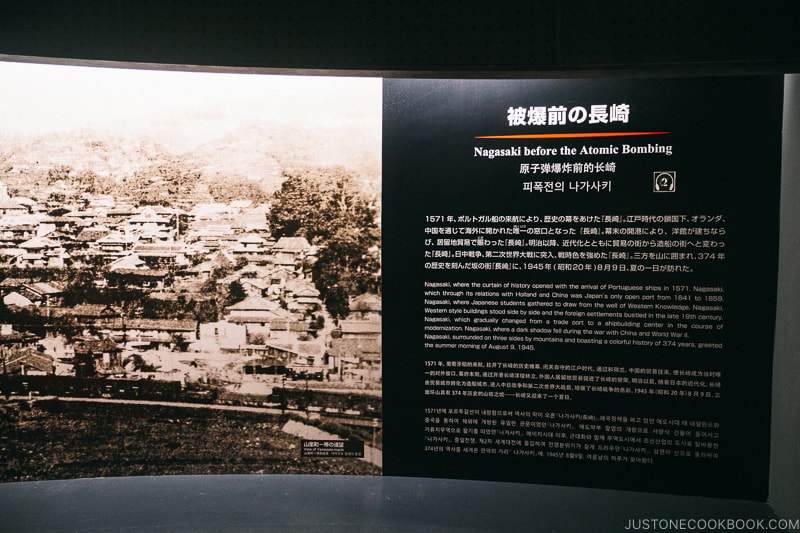
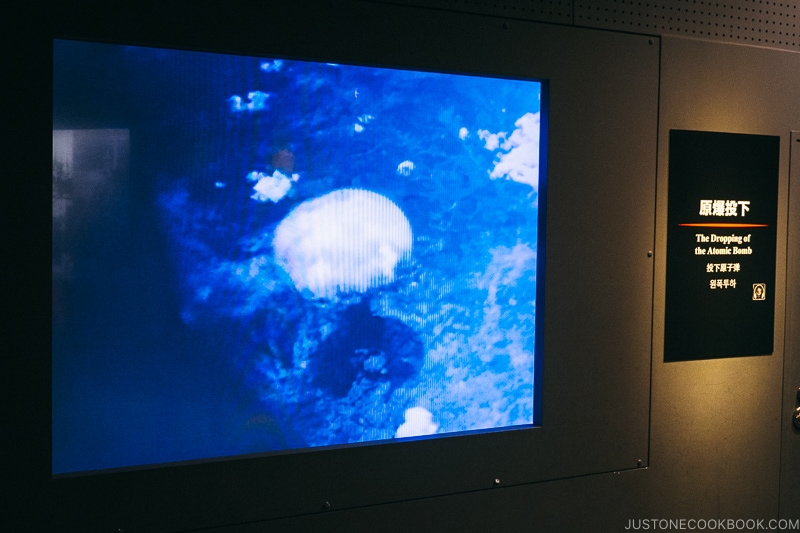
The first room is designed to give visitors a sense of the widespread destruction in Nagasaki. What it felt like to be in Nagasaki after the bomb exploded. Broken water tanks, ruins from Urakami Cathedral, bent metal beams, and fallen buildings.
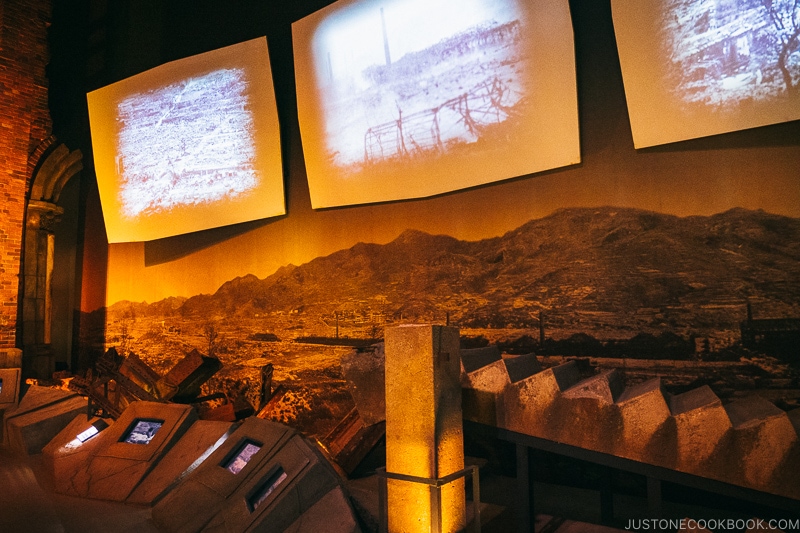
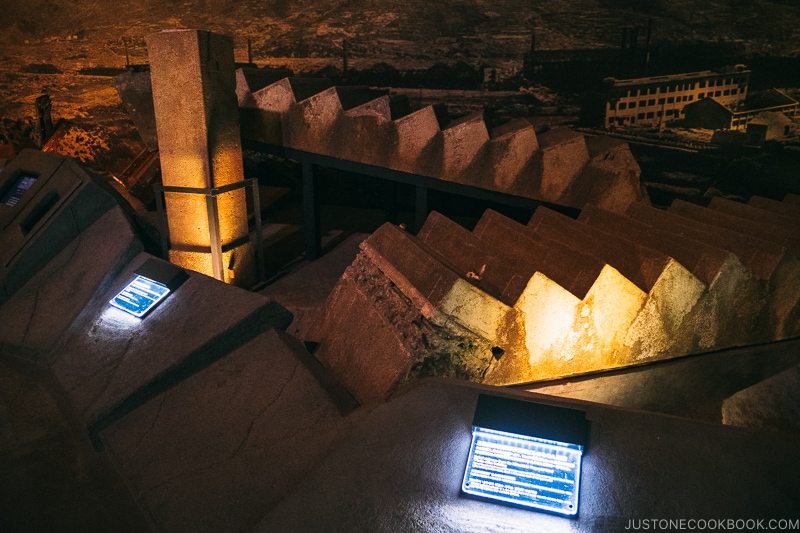
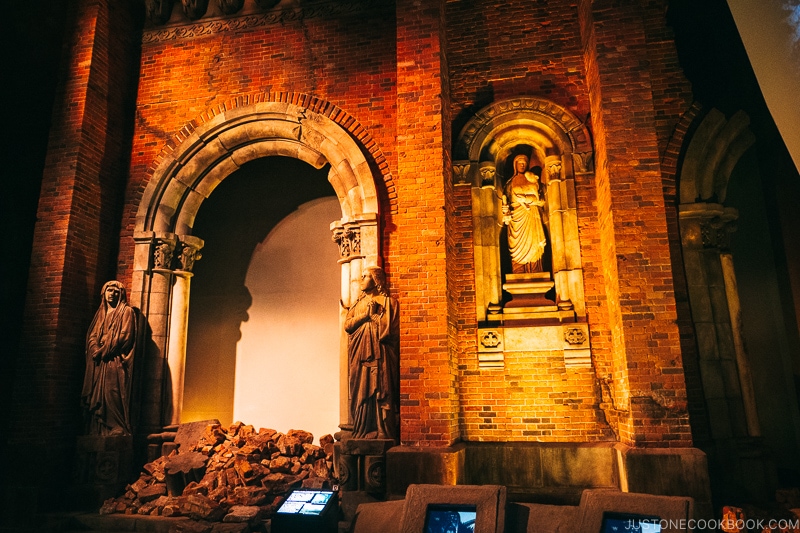
Artifacts and History Related to the Atomic Bombing
The second room starts with a timeline of events that lead to the bombing.

The timeline ends with aerial photos showing Nagasaki 2 days before and 1 month after the event.
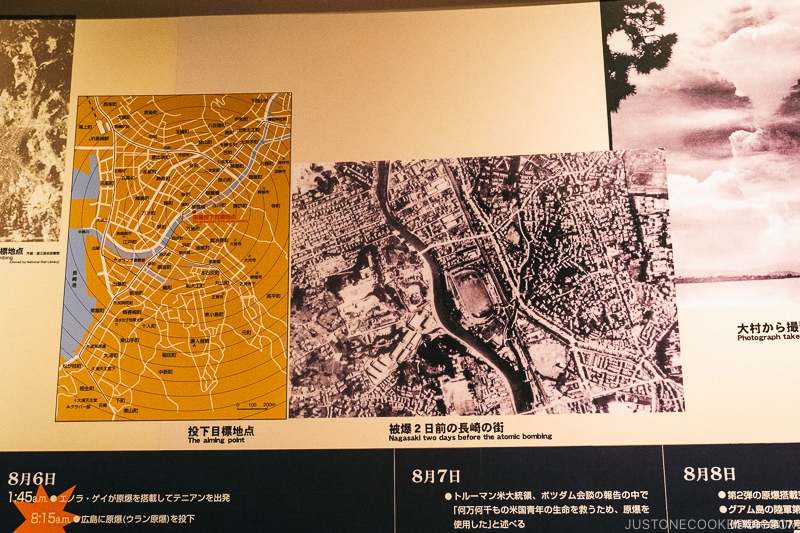
The image of Nagasaki 1 month after the bombing shows barren land and the entire area flattened.
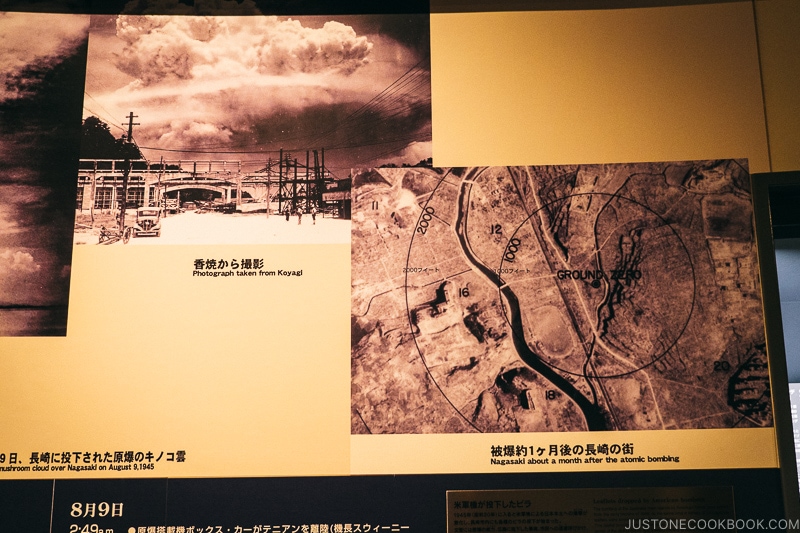
A 3D model next to the timeline shows the area affected by the blast. Since Nagasaki is situated in a valley, the blast effect was more confined than Hiroshima’s.
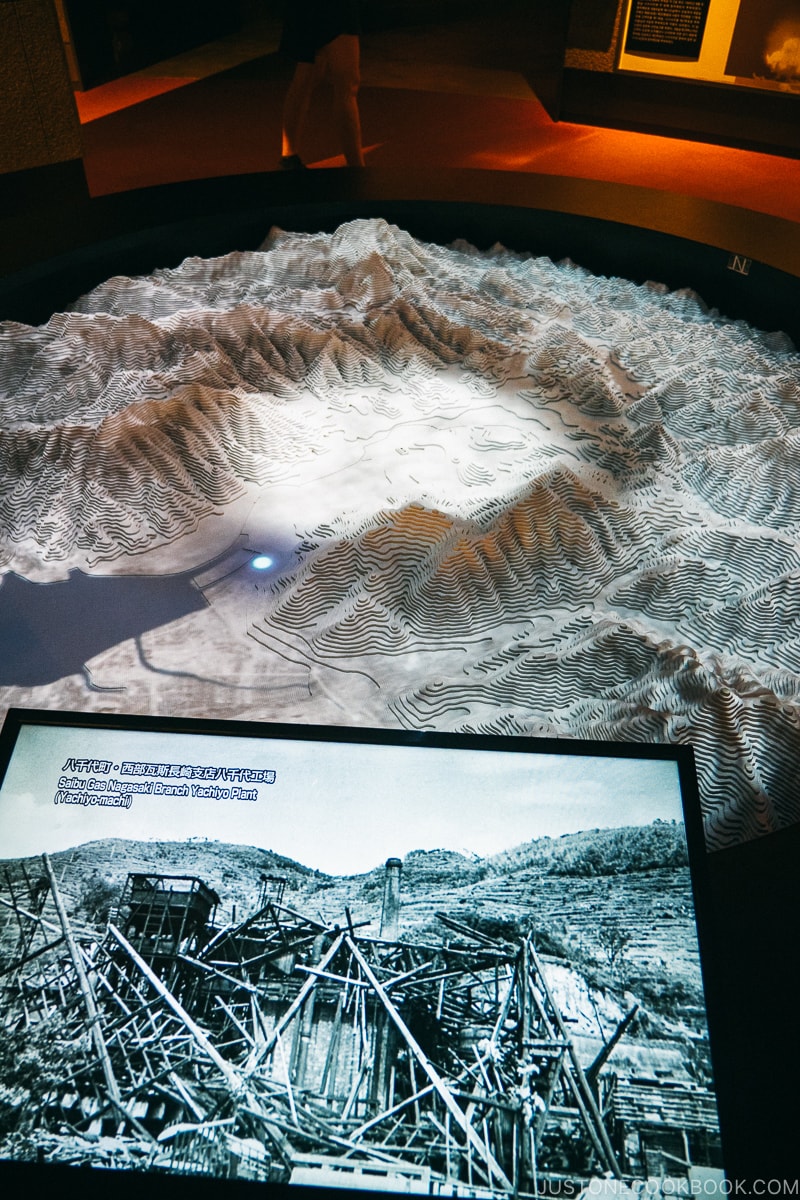
A replica of the Fatman bomb and an explanation of how atomic bombs work.
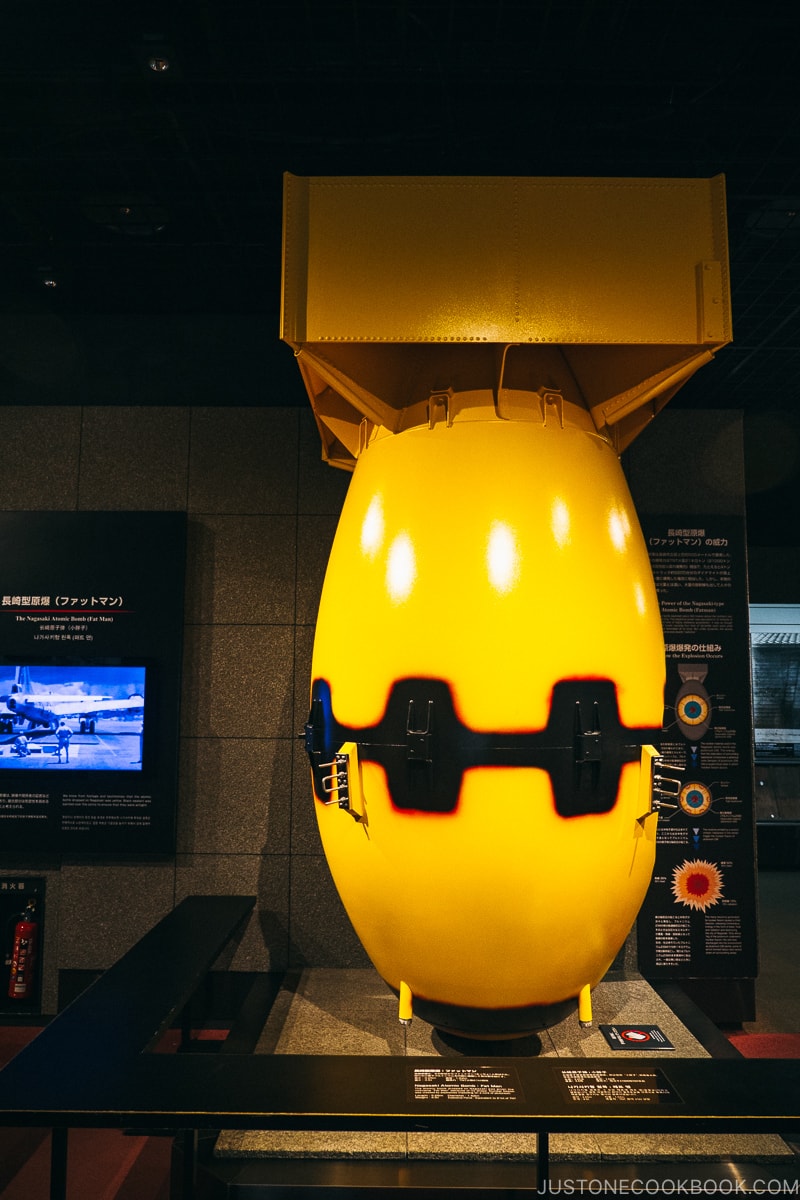
The remainder of the room displayed artifacts melted and destroyed by the explosion and photos around Nagasaki.
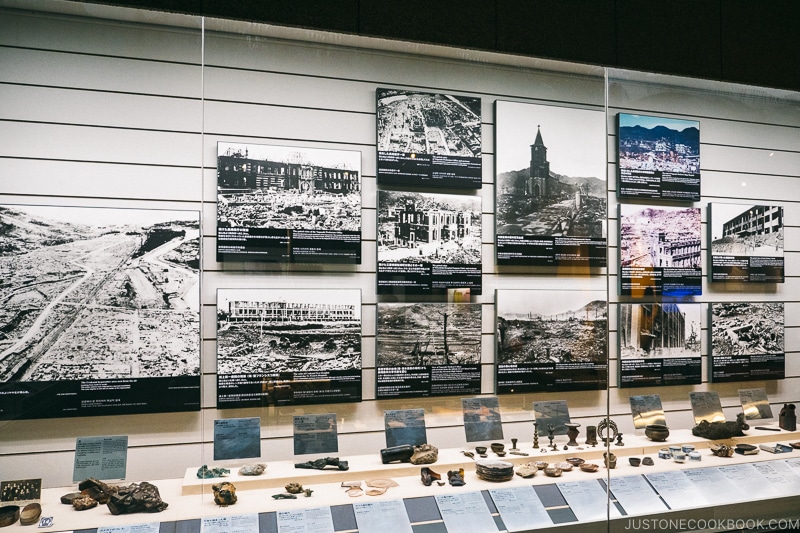
After the bomb exploded, fires ravaged through the city, and one-third of the city was burnt down. Exhibits after exhibits of the widespread death and the city in ruins were difficult to view.
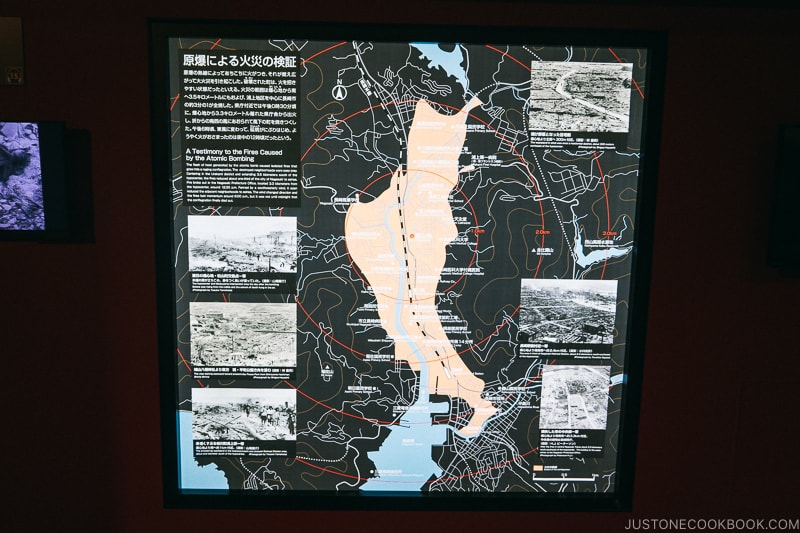
Nuclear Weapons Free World
The last part of the museum shares information on the proliferation of nuclear weapons over the past decades. Simply put, there are enough nuclear weapons today to completely wipe out mankind from our planet.
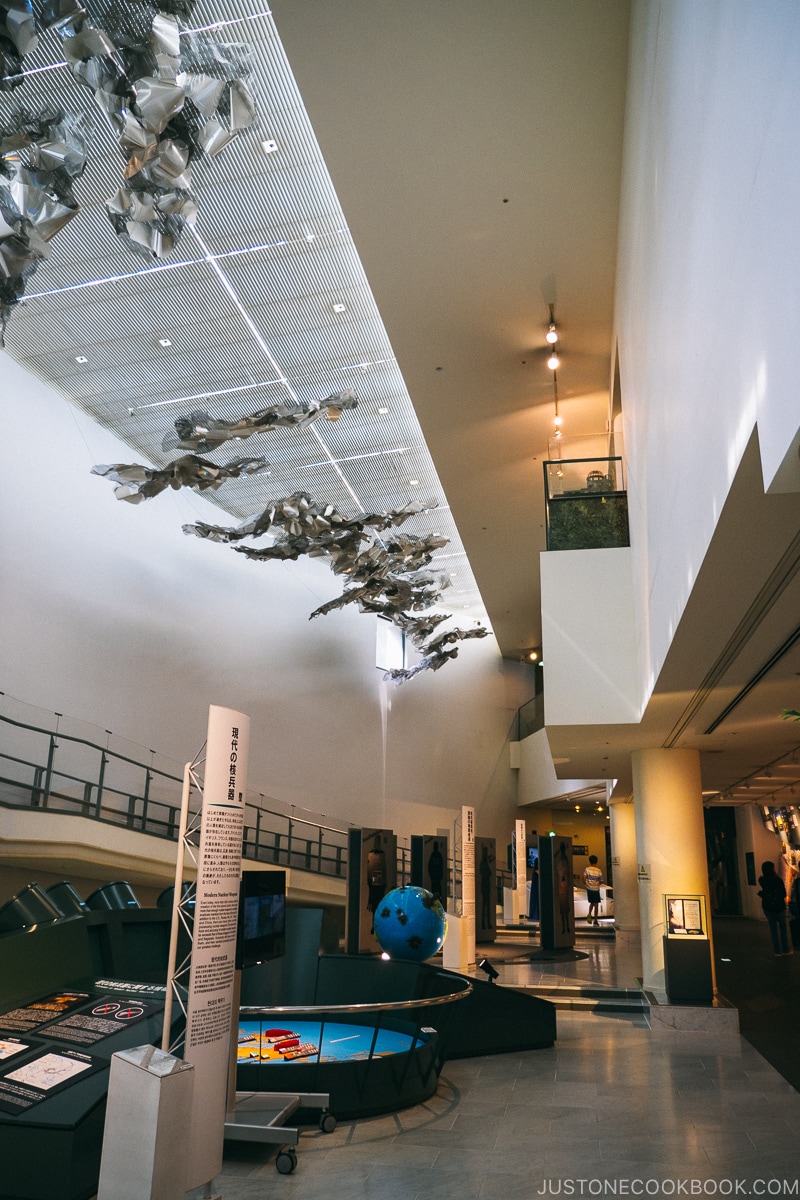
Nagasaki National Peace Memorial Hall for the Atomic Bomb Victims
Next to the Atomic Museum is Nagasaki National Peace Memorial Hall for the Atomic Bomb Victims. It was built in 2003 to commemorate peace and to remember the 70,000+ people who died. The memorial hall is built underground with twelve columns of light that extends above ground.
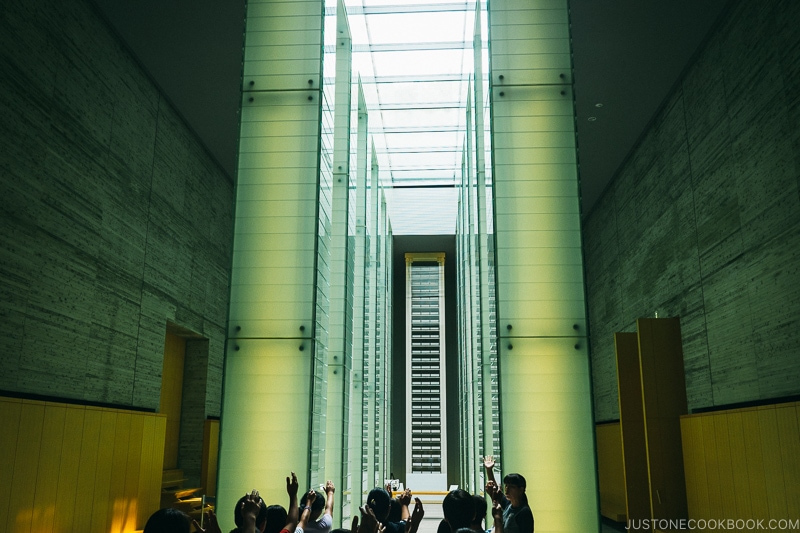
Atomic Bomb Hypocenter Park
Just west of the museum is the Hypocenter Park. The park has a cenotaph that marks the point where the explosion took place 500 meters above.
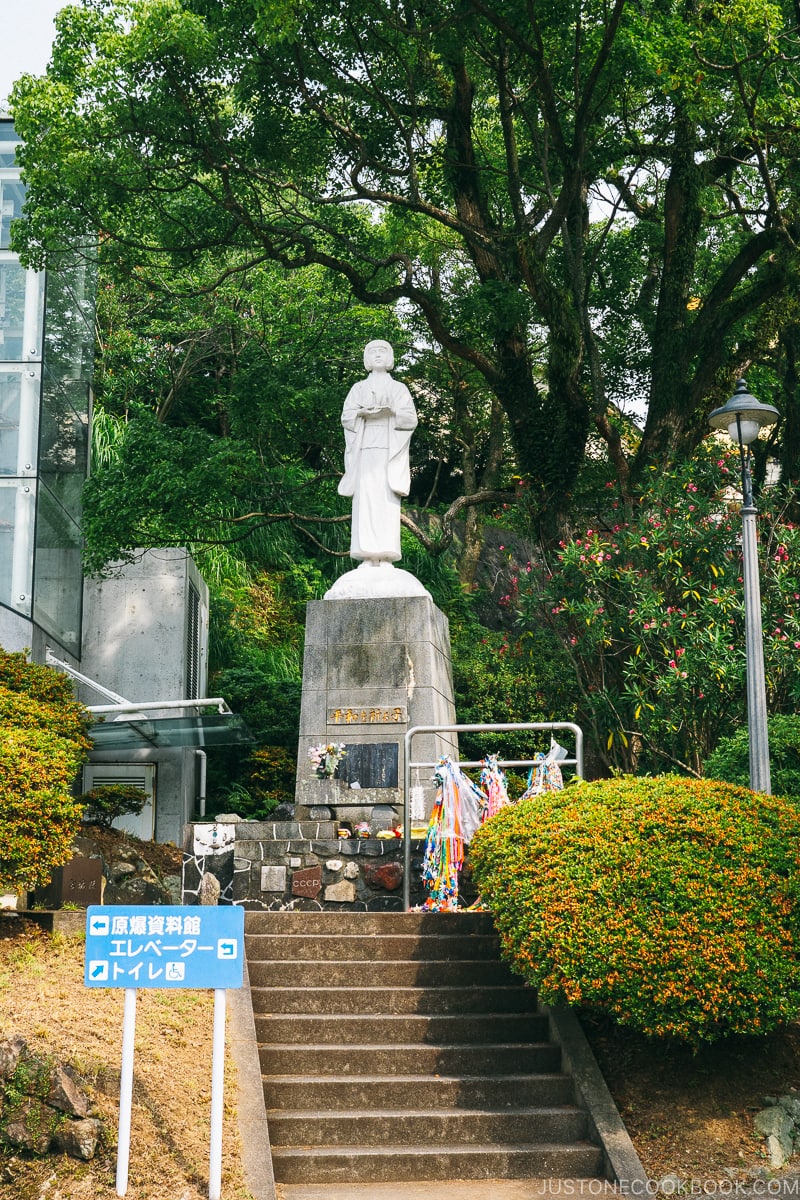
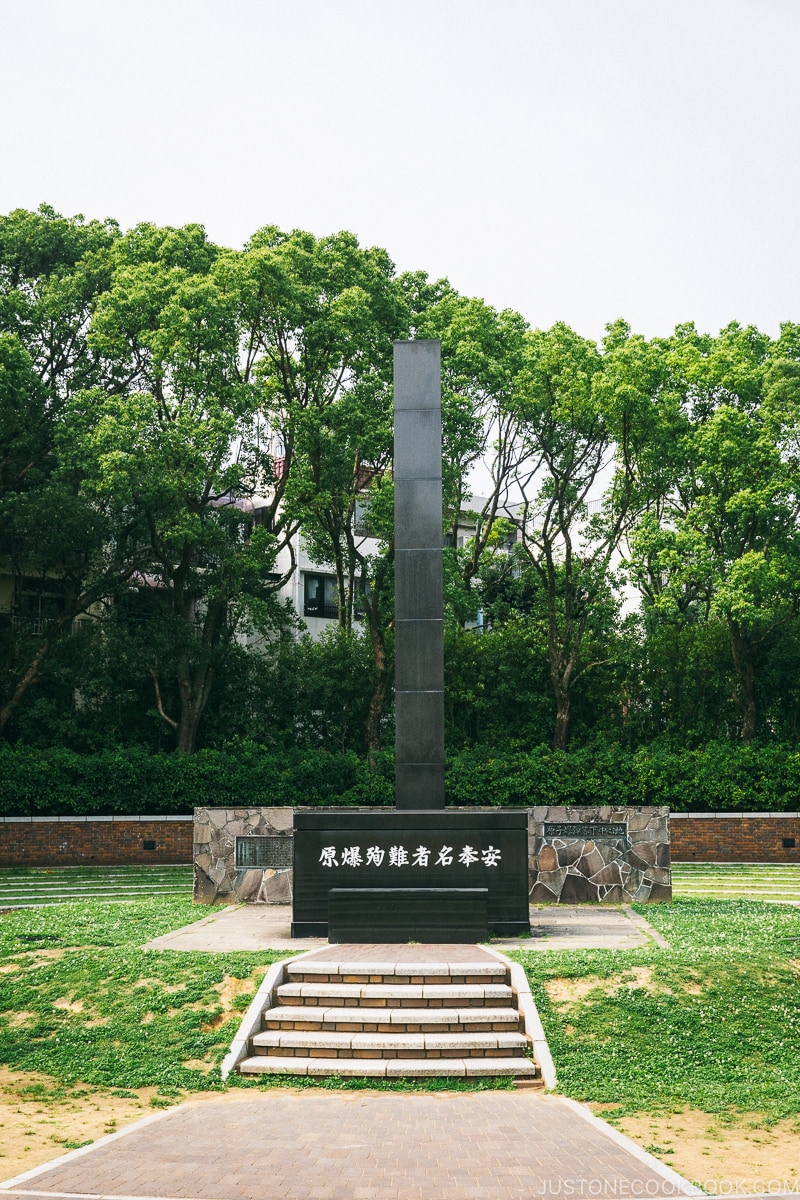
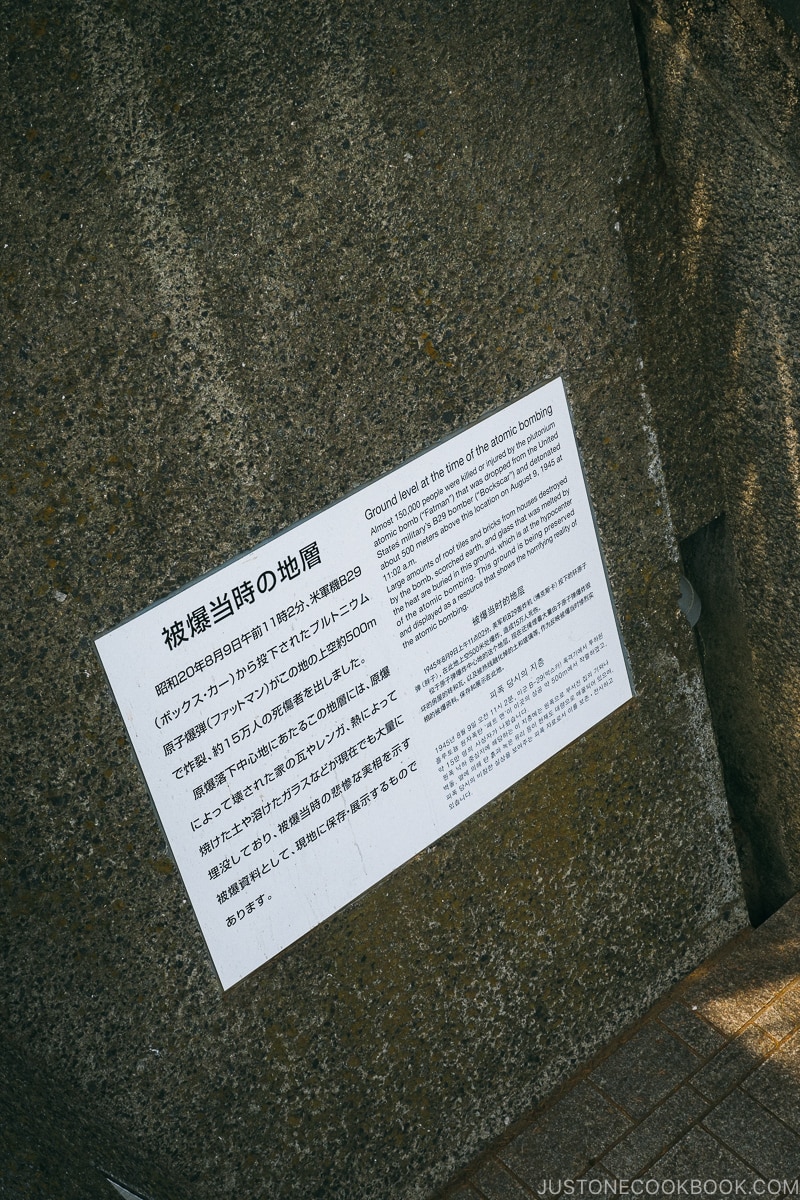
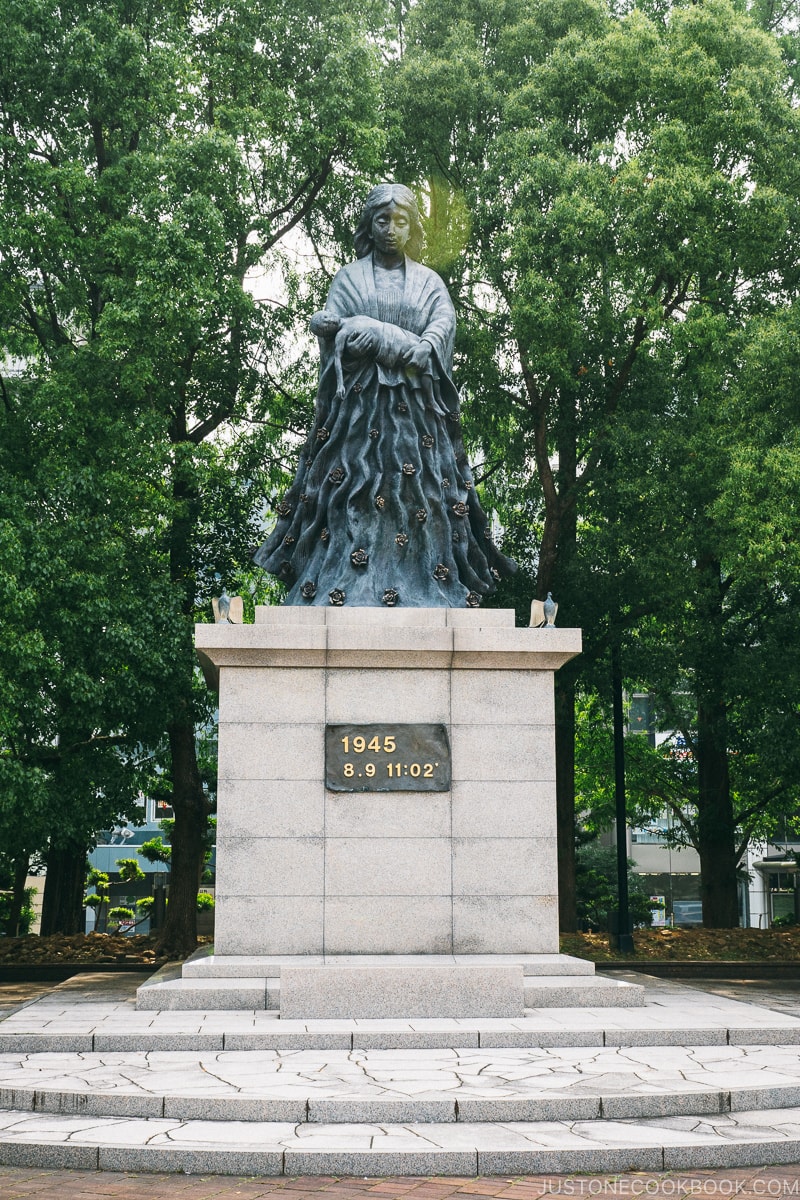
Nagasaki Peace Park
The last stop of our visit to the area is Nagasaki Peace Park. It is known for the giant Peace Statue.
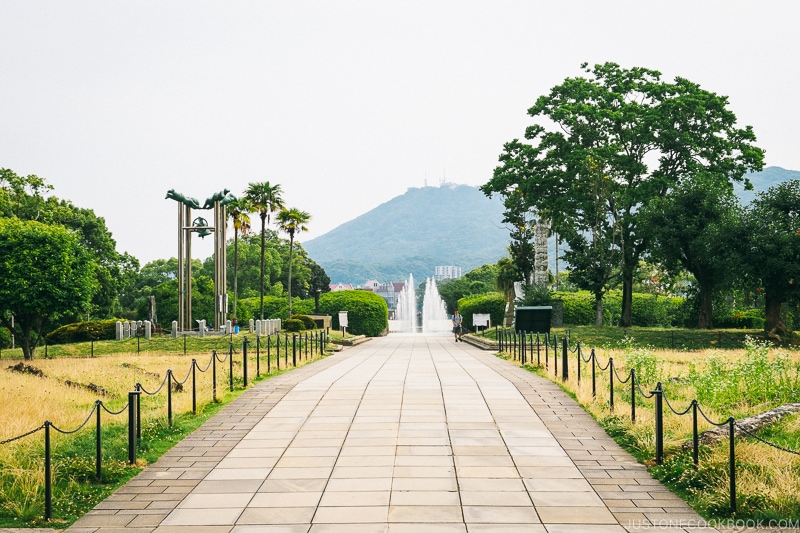
Nagasaki Peace Park was established in 1955, 10 years after the bombing. On one side of the park is the “Fountain of Peace ” and a paved walkway leads to the Peace Statue on the other end. The fountain was constructed in memory of the victims who were crying for water and eventually succumbed to their injuries.
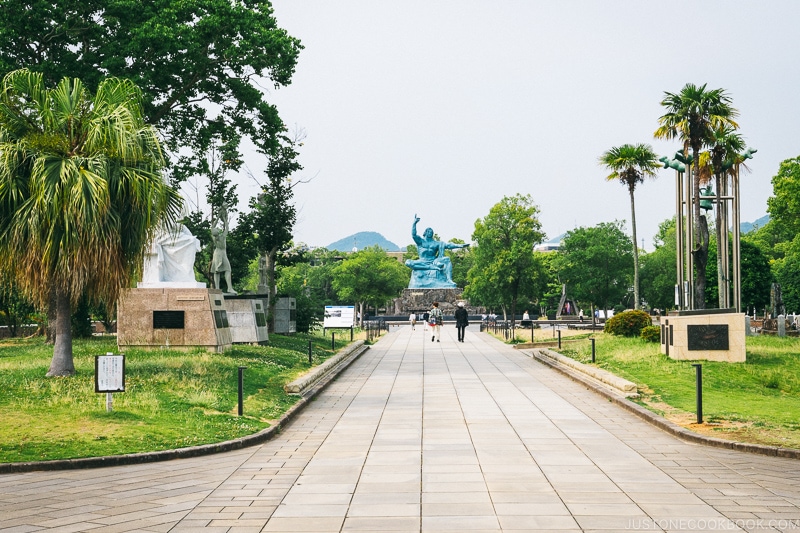
Along the walkway are monuments and statues donated from countries all over the world symbolizing peace, love, and happiness on earth.
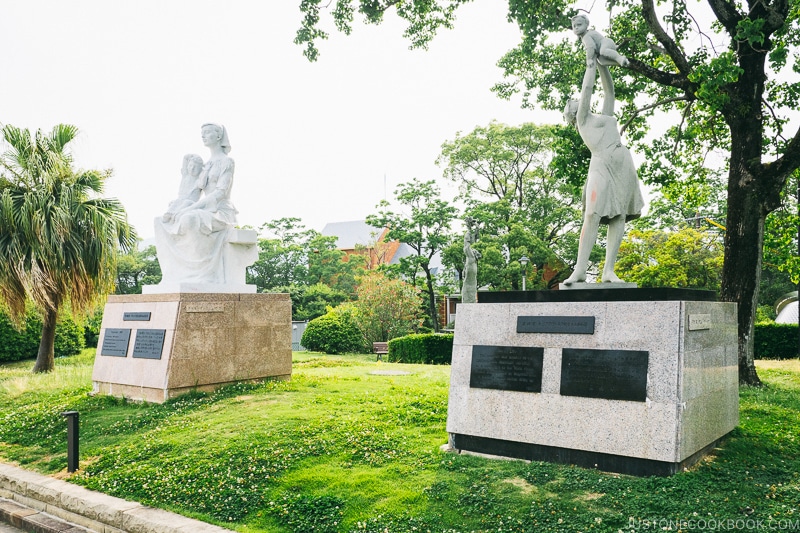
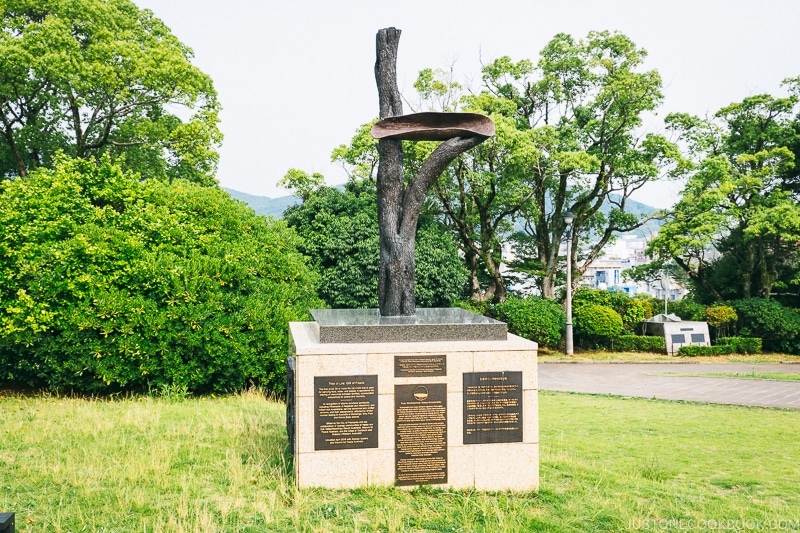
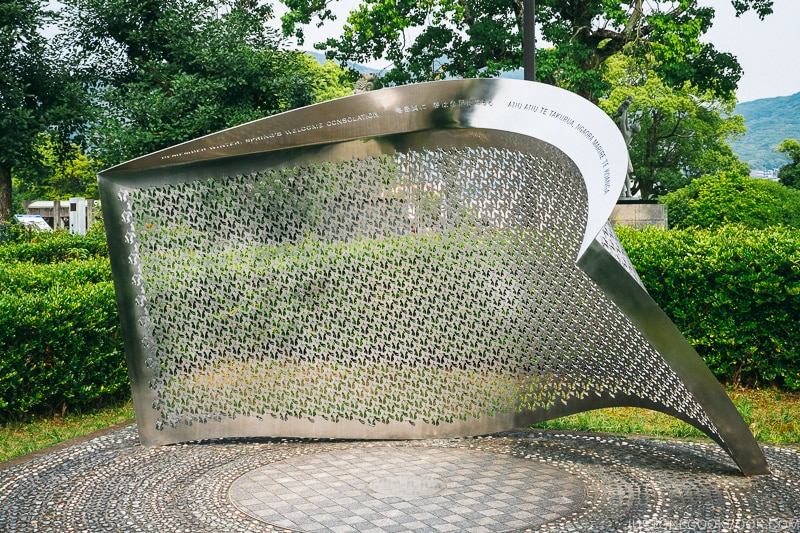
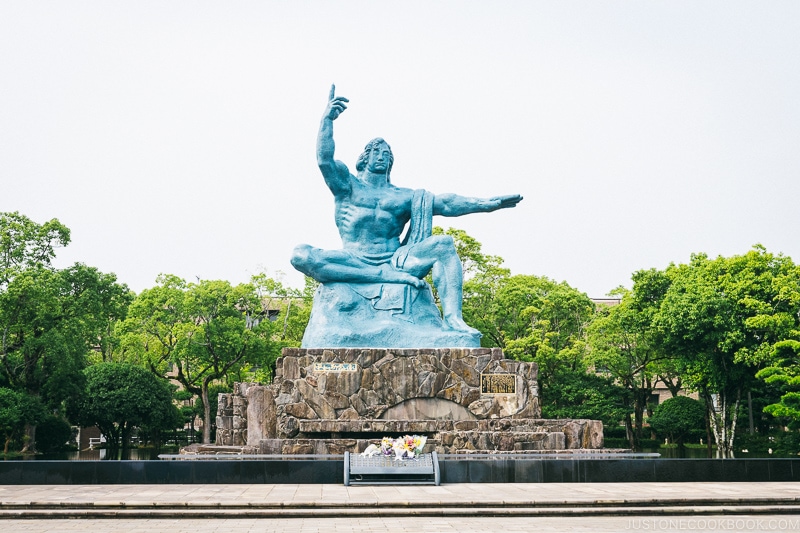
You may wonder why the Peace Statue is in this particular pose.
- The right-hand points to the sky for the threat of the nuclear weapon
- The horizontal left arm represents peace
- The right leg is in meditation pose
- The left leg representing stand up and help the world
- The closed eyes are praying for the victims’ souls
For other destinations in Nagasaki, please see the travel guide.

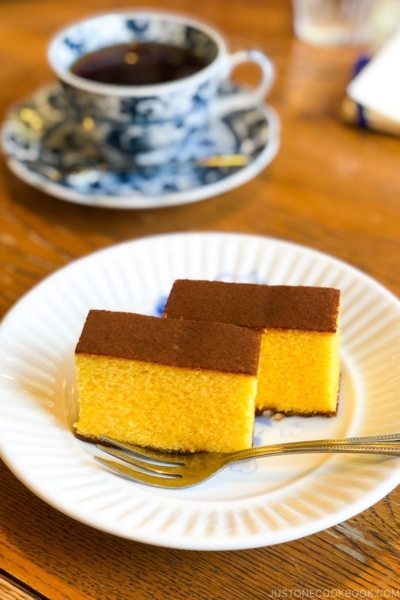
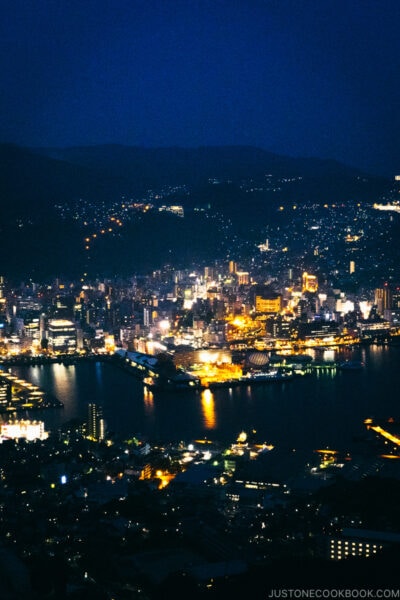






Thank you for sharing your experience in Nagasaki. We visited Japan four years ago, and although we spent the bulk of our time in and around Tokyo, we did take an overnight excursion and 1 day visit to Hiroshima. When we arrived at the Genbaku (A-Bomb) dome, extreme emotion flooded over me. The museum artifacts were very moving, although very heavy when reading the experience suffered by parents whose children were lost. Although we were concerned about the weight of the experience to our son, who was ten years old at the time, felt it was important for his life to experience, as you noted, for the sake of his education and commitment to peace. Thank you for sharing your photos from Nagasaki.
I visited Nagasaki peace park the year I moved to Japan. 7 years later, when my grandchildren visited, we saw Hiroshima peace park and museum. I gave them a brief overview of WWII, etc. before we viewed the museum. It was a solemn moment for us.
I loved the sculptures at Nagasaki peace park. Very serene setting.
Hi Deborah,
It was touching to see how many countries donated sculptures and monuments to make Peace Park a beautiful place to visit.
Hi Michael,
Thank you for stopping by and reading about the Nagasaki’s Atomic Bomb Museum. It is a very difficult subject to teach our children about but something we feel like we must do for the next generation. The horrifying aftermath and the innocent lives that were lost should not be repeated.